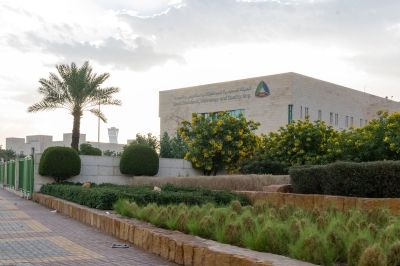
The Law of Precious Metals and Gemstones in the Kingdom of Saudi Arabia is a set of regulations governing the trade of precious metals and gemstones within the Kingdom. It safeguards the rights of traders in precious metals and gemstones, outlines their responsibilities, and protects consumer rights. The law specifies the legal standards for precious metal alloys and products, and it defines violations as well as the penalties imposed on violators.
History of the Law of Precious Metals and Gemstones in Saudi Arabia
The Law of Precious Metals and Gemstones was issued on April 24, 1983, consisting of twenty-two articles, replacing the Goldsmiths' Law issued by Royal Decree in 1941. The executive regulations for the law were first issued in 1985 and later revised in 2018, nullifying the previous regulations.
Duties of the Ministry of Commerce under the Law of Precious Metals and Gemstones
Article One of the Law of Precious Metals and Gemstones stipulates that the Ministry of Commerce may oversee and regulate the trade and industry of precious metals, their products, plated, coated, inlaid items, and gemstones. The ministry has, in particular, the following responsibilities:
- Inspecting, analyzing, hallmarking, and monitoring precious metal products, as well as items that are plated, coated, or inlaid with precious metals, and products that use precious metals or gemstones.
- Analyzing, numbering, and hallmarking unprocessed precious metals, their alloys, or bars presented for inspection, and marking them with the Kingdom's hallmark.
- Inspecting and monitoring gemstones, and identifying the types subject to this law.
- Defining the legal standards for the purity of precious metals.
- Determining the design and specifications of the Kingdom's hallmark used for marking precious metals and their products.
- Specifying the types of products made entirely or partially from precious metals that are exempt from the provisions of this law.
- Establishing the fees required for inspection, analysis, hallmarking, and certificate issuance.
- Setting the conditions and procedures for hallmarking, inspection, and analysis of items subject to the provisions of this law.
- Establishing the conditions for engaging in the trade and manufacturing of items subject to the provisions of this law.
The manufacturing of precious metals and gemstones is not permitted without obtaining a license from the Ministry of Commerce.
Requirements for selling items plated with precious metals
According to Article Three of the Law of Precious Metals and Gemstones, it is prohibited to sell, offer, or possess with the intent to sell items plated with precious metals, or items below the minimum legal purity standards, except in accordance with instructions issued by the Minister of Commerce. It is also prohibited to sell, display, or possess precious metal bars and products for sale unless they are hallmarked with the Kingdom's official mark.
According to Article Four of the law, the customs or postal authorities, after notifying the concerned party, are responsible for sending parcels containing precious metal bars or products, as well as other items subject to the provisions of this law that are imported for commercial purposes, to the competent authority within the Ministry of Commerce. The ministry will inspect, analyze, and hallmark them with the Kingdom's official mark or verify that they are hallmarked with a recognized mark.
Precious metal bars and products are presented to the competent authority within the Ministry of Commerce for inspection and hallmarking in accordance with the legal purity standards. If it is determined that the items fall below the minimum legal purity standards, they are broken and returned to their owner. In all cases, the owner has the right to request that the items be re-exported to their source in their current condition if they were imported.
No changes may be made to precious metal bars or products after they have been hallmarked by the Ministry of Commerce due to preparation processes for sale, except for necessary manufacturing requirements and in accordance with the instructions issued by the Ministry of Commerce.
Requirements for selling precious metal products
Article Eight of the Law of Precious Metals and Gemstones stipulates that it is prohibited to sell, display for sale, or possess with the intent to sell precious metal products, as well as plated, inlaid, or coated items, unless they are hallmarked as follows:
- Precious metal products must be hallmarked according to their purity standard, using one of the legal standards set by the Ministry of Commerce.
- Plated or inlaid items must be hallmarked with a number indicating the percentage of pure precious metal they contain, along with the type of metal.
- Each plated or inlaid item must be accompanied by a tag that includes the aforementioned details, as well as the shop owner's name in Arabic.
Requirements for selling gemstones
The Law of Precious Metals and Gemstones specifies the requirements and prohibitions related to the sale of gemstones. It is prohibited to sell, display for sale, or possess gemstones with the intent to sell unless accompanied by a written statement from the owner. This statement must include the name of the gemstone, its type, weight, color, and quality, specifying its level of purity, characteristics, and any defects, such as cracks or scratches, as well as any other identified flaws.
According to Article Twelve, exhibitions of precious metal products, gemstones, and other items subject to this law may be held with a temporary license from the Minister of Commerce. The terms and procedures for such exhibitions are determined by the Ministry of Commerce in agreement with the Ministry of Finance. Exhibits may be exempted from hallmarking and certain other procedures outlined in this law if the purpose is solely for display.
The Minister of Commerce appoints officials responsible for monitoring the enforcement of this law and its regulations. These officials have the authority to enter and inspect shops, warehouses, and any other locations where items subject to this law are found. They are also authorized to take samples for inspection and analysis and to document violations and prepare the necessary reports, all in accordance with the procedures specified in the executive regulations.
Penalties under the Law of Precious Metals and Gemstones
A penalty of imprisonment for up to two years or a fine not exceeding SAR400,000, or either of these penalties, is imposed on:
- Anyone who deceives or cheats in the type, weight, or purity of precious metals or plated, inlaid, or coated items, or deceives or cheats in the type, grade, weight, or quality of gemstones.
- Anyone who makes alterations to precious metals or their products after they have been hallmarked, rendering them non-compliant with the indicated purity standard, or deals with them knowingly.
- Anyone who sells, offers for sale, or possesses with the intent to sell precious metal bars or products that are not hallmarked with the legal mark. It is permissible to impose a penalty of license suspension and closure of the shop for a period not exceeding three years if any of the aforementioned violations are committed again within five years from the date of the final judgment in the first violation.
A penalty of imprisonment for up to six months or a fine not exceeding SAR90,000, or either of these penalties, is imposed on anyone who engages in the manufacturing of precious metals and their products or gemstones without a license.
The law also stipulates a penalty of imprisonment for up to two months or a fine not exceeding SAR30,000, or either of these penalties, for anyone who prevents or causes the prevention of the officials responsible for monitoring the enforcement of this law and its regulations from carrying out their duties.
A fine not exceeding SAR200,000 is imposed on anyone who commits any other violation of the provisions of this law and its regulations. Imposing the penalties stipulated in this law does not preclude the application of any penalties prescribed by other laws, nor does it affect the right of the affected party to seek compensation.
The decision imposing the penalty may include a provision requiring the publication of a summary of the decision at the violator's expense in a local newspaper or any other appropriate medium, depending on the nature, severity, and societal impact of the violation. The decision can only be published after it becomes final, either by the lapse of the legally specified appeal period or by being upheld by the competent court.
Executive regulations of the Law of Precious Metals and Gemstones
On November 3, 2018, the Ministry of Commerce issued the executive regulations for the Law of Precious Metals and Gemstones. These regulations set the legal standards for the purity of precious metals and the types of gemstones covered by the law. Additionally, they outlined the requirements and conditions for engaging in the trade and manufacture of precious metals and gemstones. The regulations also required traders, manufacturers, and importers to hallmark their products with a registered trademark, in accordance with the GCC Trademarks Law. Furthermore, the regulations specified consumer rights by defining the information that must be included in sales and purchase invoices by each trader.
Related quizzes
Related articles

